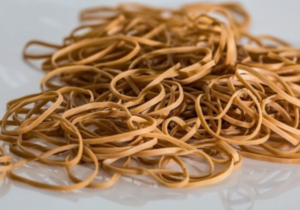Natural and synthetic rubber are both in high demand by manufacturers, with their differences making them useful for different applications. Let’s take a look at these differences and the pros and cons of each.
According to the New Scientist magazine, the world’s total rubber supply is under threat. It is a crucial ingredient in over 40,000 products across all industries, so synthetic rubber is obviously a vital material in the right applications.

What is natural rubber?
Natural rubber is typically sourced from rubber trees native to Brazil and Panama; in addition, it is cultivated in many South and South East Asian countries. The common dandelion can even be used in rubber production, although the latex produced is not the favoured source. The most common commercial applications, making use of rubber’s elastic properties, include tyres for the automotive and aerospace industries.
What is synthetic rubber?
Synthetic rubber is produced artificially by the polymerisation of monomers into polymers. Different properties can be produced to suit the desired application
Natural versus synthetic
In general, synthetic rubber is superior to natural rubber in terms of heat resistance, resistance to abrasion, and ageing resistance. It also tends to be less expensive to produce.
Natural rubber is also a very strong, flexible and heat-resistant material, with each type of rubber ‘better’ for certain applications; for example, additives can make natural rubber more saltwater resistant. Synthetic neoprene gives even better resistance and tends to be the preferred option for marine applications.
There are many suppliers that can assist with different options for rubber moulding UK, such as www.meadex.co.uk/rubber-moulding.

The difference in price between natural and synthetic rubber is influenced by both demand-side factors, such as its use and production, and supply-side factors, such as the price and availability of raw materials. The price of natural rubber in particular is dominated by supply-side factors, which can make it very volatile compared to the price of synthetic rubber.
The markets for each type of rubber are actually very different, so they tend to be used as complementary materials rather than direct substitutes.




